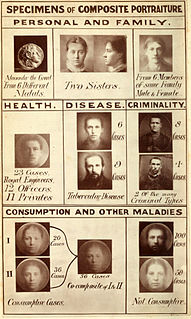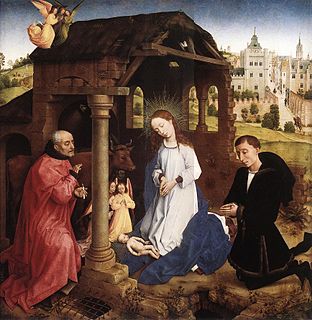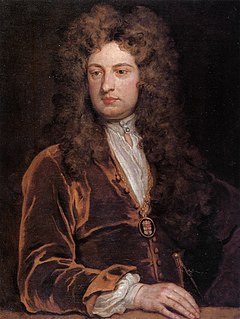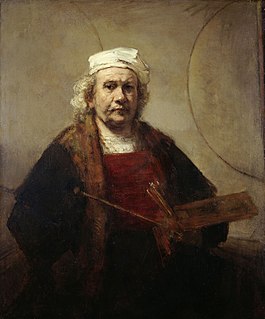 W
WA portrait is a painting, photograph, sculpture, or other artistic representation of a person, in which the face and its expression is predominant. The intent is to display the likeness, personality, and even the mood of the person. For this reason, in photography a portrait is generally not a snapshot, but a composed image of a person in a still position. A portrait often shows a person looking directly at the painter or photographer, in order to most successfully engage the subject with the viewer.
 W
WPortrait painting is a genre in painting, where the intent is to represent a specific human subject. The term 'portrait painting' can also describe the actual painted portrait. Portraitists may create their work by commission, for public and private persons, or they may be inspired by admiration or affection for the subject. Portraits often serve as important state and family records, as well as remembrances.
 W
WThis is a list of winners of the annual Archibald Prize for portraiture, first awarded in 1921.
 W
WCatwalk! is a series of collages created by Christiaan Tonnis.
 W
WComposite portraiture is a technique invented by Sir Francis Galton in the 1880s after a suggestion by Herbert Spencer for registering photographs of human faces on the two eyes to create an "average" photograph of all those in the photographed group.
 W
WA conversation piece is an informal group portrait, especially those painted in Britain in the 18th century, beginning in the 1720s. They are distinguished by their portrayal of the group apparently engaged in genteel conversation or some activity, very often outdoors. Typically the group will be members of a family, but friends may be included, and some groups are of friends, members of a society or hunt, or some other grouping. Often the paintings are relatively small, about the same size as a half-length portrait but in horizontal or "landscape" format; others are much larger.
 W
WA donor portrait or votive portrait is a portrait in a larger painting or other work showing the person who commissioned and paid for the image, or a member of his, or her, family. Donor portrait usually refers to the portrait or portraits of donors alone, as a section of a larger work, whereas votive portrait may often refer to a whole work of art intended as an ex-voto, including for example a Madonna, especially if the donor is very prominent. The terms are not used very consistently by art historians, as Angela Marisol Roberts points out, and may also be used for smaller religious subjects that were probably made to be retained by the commissioner rather than donated to a church.
 W
WAn environmental portrait is a portrait executed in the subject's usual environment, such as in their home or workplace, and typically illuminates the subject's life and surroundings. The term is most frequently used of a genre of photography.
 W
WAn equestrian portrait is a portrait that shows the subject on horseback. Equestrian portraits suggest a high-status sitter, who in many cases was a monarch or other member of the nobility, and the portraits can also carry a suggestion of chivalry.
 W
WA fancy portrait is a portrait of a real or literary character that takes the form of a conventional portrait, but is defined by the fact that its depiction of the character is derived from the artist's imagination rather than any authentic record of the person's appearance. In J. and H. L. Hunt's translation of Dictionnaire philosophique, Voltaire describes the fancy portrait as "a portrait not taken from any model".
 W
WFingask Castle is a country house in Perth and Kinross, Scotland. It is perched 200 feet (61 m) above Rait, three miles (5 km) north-east of Errol, in the Braes of the Carse, on the fringes of the Sidlaw Hills. Thus it overlooks both the Carse of Gowrie and the Firth of Tay and beyond into the Kingdom of Fife. The name derives from Gaelic fionn-gasg: a white or light-coloured appendage.
 W
WThe Giovio Series, also known as the Giovio Collection or Giovio Portraits, is a series of 484 portraits assembled by the 16th-century Italian Renaissance historian and biographer Paolo Giovio. It includes portraits of literary figures, rulers, statesmen and other dignitaries, many of which were done from life. Intended by Giovio as a public archive of famous men, the collection was originally housed in a specially-built museum on the shore of Lake Como. Although the original collection has not survived intact, a set of copies made for Cosimo I de' Medici now has a permanent home in Florence's Uffizi Gallery.
 W
WThe hand-in-waistcoat is a gesture commonly found in portraiture during the 18th and 19th centuries. The pose appeared by the 1750s to indicate leadership in a calm and firm manner. The pose is most often associated with Napoleon I of France due to its use in several portraits made by his artist, Jacques-Louis David, amongst them the 1812 painting Napoleon in His Study. The pose, thought of as being stately, was copied by other portrait painters across Europe and America. Most paintings and photographs show the right hand inserted into the waistcoat/jacket, but some sitters appear with the left hand inserted. The pose was also often seen in mid-nineteenth century photography.
 W
WJean-Michel Basquiat is a painting created by American artist Andy Warhol in 1982. Warhol made multiple silkscreen portraits of artist Jean-Michel Basquiat using his "piss paintings."
 W
WA kit-cat portrait or kit-kat portrait is a particular size of portrait, less than half-length, but including the hands. The name originates from a famous series of portraits which were commissioned from Godfrey Kneller for members of the Kit-Cat Club, a Whig dining club, to be hung in their meeting place at Barn Elms. They are now mostly in the collection of the National Portrait Gallery, London, with a selection of about twelve displayed in London and others at their satellite locations, including twenty on display at Beningbrough Hall in North Yorkshire.
 W
WA portrait miniature is a miniature portrait painting, usually executed in gouache, watercolor, or enamel. Portrait miniatures developed out of the techniques of the miniatures in illuminated manuscripts, and were popular among 16th-century elites, mainly in England and France, and spread across the rest of Europe from the middle of the 18th century, remaining highly popular until the development of daguerreotypes and photography in the mid-19th century. They were usually intimate gifts given within the family, or by hopeful males in courtship, but some rulers, such as James I of England, gave large numbers as diplomatic or political gifts. They were especially likely to be painted when a family member was going to be absent for significant periods, whether a husband or son going to war or emigrating, or a daughter getting married.
 W
WMonidło is a wedding portrait based on a hand-coloured photograph of the bride and bridegroom.
 W
WOrange Prince (1984) is a painting by American artist Andy Warhol, of Prince, the American singer, songwriter, record producer, multi-instrumentalist, actor, and director. The painting is one of twelve silkscreen portraits on canvas of Prince created by Warhol in 1984. These paintings and four additional works on paper are collectively known as the Prince Series. Each painting is unique and can be distinguished by colour.
 W
WThe Pan Poëticon Batavum was a collection of small portraits of poets mounted on plates that were kept in a curiosity cabinet by the 18th-century Dutch painter Arnoud van Halen.
 W
WPortrait of the Artist's Family is a portrait of the family of the painter Hans Holbein the Younger by the artist himself. It depicts Holbeins wife Elsbeth Binzenstock and their son Philipp and their daughter Katharina. Holbein painted it during his stay in Basel to where he returned from England It shall have been painted between 1528 and 1529 on paper and glued on wood.
 W
WPortrait painting in Scotland includes all forms of painted portraiture in Scotland, from its beginnings in the early sixteenth century until the present day. The origins of the tradition of portrait painting in Scotland are in the Renaissance, particularly through contacts with the Netherlands. The first portrait of a named person that survives is that of Archbishop William Elphinstone, probably painted by a Scottish artist using Flemish techniques around 1505. Around the same period Scottish monarchs turned to the recording of royal likenesses in panel portraits, painted in oils on wood. The tradition of royal portrait painting in Scotland was probably disrupted by the minorities and regencies it underwent for much of the sixteenth century. It began to flourish after the Reformation, with paintings of royal figures and nobles by Netherlands artists Hans Eworth, Arnold Bronckorst and Adrian Vanson. A specific type of Scottish picture from this era was the "vendetta portrait", designed to keep alive the memory of an atrocity. The Union of Crowns in 1603 removed a major source of artistic patronage in Scotland as James VI and his court moved to London. The result has been seen as a shift "from crown to castle", as the nobility and local lairds became the major sources of patronage.
 W
WA presentation miniature or dedication miniature is a miniature painting often found in illuminated manuscripts, in which the patron or donor is presented with a book, normally to be interpreted as the book containing the miniature itself. The miniature is thus symbolic, and presumably represents an event in the future. Usually it is found at the start of the volume, as a frontispiece before the main text, but may also be placed at the end, as in the Vivian Bible, or at the start of a particular text in a collection.
 W
WA regents group portrait, is a group portrait of the board of trustees, called regents or regentesses, of a charitable organization or guild. This type of group portrait was popular in Dutch Golden Age painting during the 17th century, and in the 18th century. They were intended to be hung in the regentenkamer, the regents' meeting room, or another prominent location in the institution.
 W
WA self-portrait is a representation of an artist that is drawn, painted, photographed, or sculpted by that artist. Although self-portraits have been made since the earliest times, it is not until the Early Renaissance in the mid-15th century that artists can be frequently identified depicting themselves as either the main subject, or as important characters in their work. With better and cheaper mirrors, and the advent of the panel portrait, many painters, sculptors and printmakers tried some form of self-portraiture. Portrait of a Man in a Turban by Jan van Eyck of 1433 may well be the earliest known panel self-portrait. He painted a separate portrait of his wife, and he belonged to the social group that had begun to commission portraits, already more common among wealthy Netherlanders than south of the Alps. The genre is venerable, but not until the Renaissance, with increased wealth and interest in the individual as a subject, did it become truly popular.
 W
WThere are only two portraits that definitively portray William Shakespeare, both of which are posthumous. One is the engraving that appears on the title-page of the First Folio, published in 1623, and the other is the sculpture that adorns his memorial in Stratford upon Avon, which dates from before 1623. Experts and critics have argued that several other paintings from the period may represent him, and more than 60 portraits purporting to be of Shakespeare were offered for sale to the National Portrait Gallery within four decades of its foundation in 1856, but in none of them has Shakespeare's identity been proven.
 W
WA tronie is the name given to a type of work common in Dutch Golden Age painting and Flemish Baroque painting that depicts an exaggerated facial expression or people in costume. These works were not intended as portraits but as studies of expression, type, physiognomy or an interesting character such as an old man or woman, a young woman, the soldier, the shepherdess, the Oriental, or a person of a particular race, etc.
 W
W